Know your carbon saving RGPs: A digital initiative by Indian Railways
Posted: 25 April 2022 | Amit Kumar Jain | No comments yet
Dr. Amit Kumar Jain, General Manager/FOIS in the Centre for Railway Information – an IT arm of India’s Ministry of Railways, explores the concept and methodology used for rail freight carbon emissions estimation, as well as the benefits this offers to customers of Indian Railways’ Rail Green Points (RGPs) initiative.
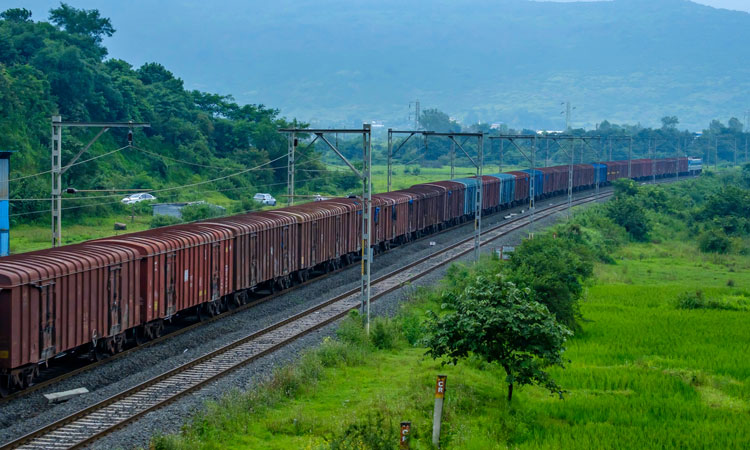

Transport accounts for around one-fifth of global carbon dioxide (CO2) emissions. Road-based transportation is responsible for around three quarters of carbon emissions from the transport sector. Furthermore, one-third of carbon emissions from road transport is attributed to freight transportation. However, rail-based transport actually emits very little – only one per cent of transport emissions in fact. Rail-based transport is the most environmentally friendly mode of mass transportation due to its inherent advantages in terms of energy efficiency and resource optimisation. Therefore, it is important that rail should be promoted as the number one choice for freight transportation, in order to curb carbon emissions.
Indian Railways is perhaps the first railway system in the world which informs freight customers of their carbon savings when transporting cargo by rail on a real-time basis.
Indian Railways play a major role in providing sustainable transportation services in the country for both freight and passenger segments. Indian Railways is the world’s fourth largest railway network after USA, China, and Russia, with a route spreading over 68,000 km. Indian Railways operates 13,000 passenger trains, carrying 23 million passengers, and 9,000 freight trains, transporting 3.05 million tonnes of freight, daily. In 2021-2022, when most activities were under lockdown due to the coronavirus pandemic, Indian Railways was still providing relentless services of freight transportation in the country, achieving the highest ever loading of 1.4 billion tonnes.
The Government of India, as part of its Nationally Determined Contributions (NDCs), has set a target of 33 per cent emissions intensity reduction, with transport being one of the key sectors with substantial mitigation potential. Indian Railways aims to enhance the share of the railways in the overall land-based freight transport from the present 36 per cent to 45 per cent by the year 2030 (Indian Railways Environmental Sustainability Annual Report 2019-20). However, road offers numerous competitive advantages over rail such as door-to-door service, cost effectiveness for shorter distances, no need of multiple handling etc. The biggest challenge is how to encourage freight customers to opt for railways for the transportation of cargo.
Rail Green Points (RGPs) is a digital initiative by Indian Railways in this direction.
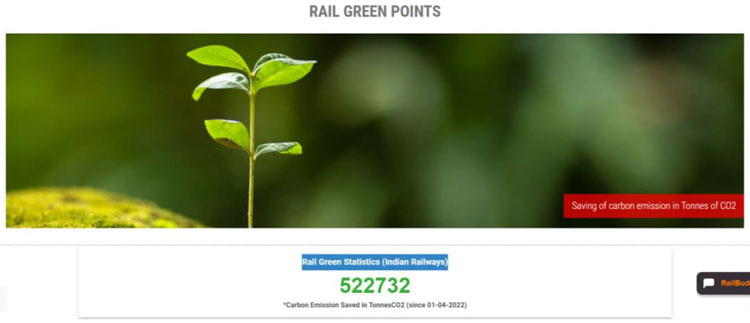

Rail Green Points (RGPs) Policy of Indian Railways
In an effort to motivate freight customers to transport more by rail, Indian Railways has decided to assign carbon savings (for transportation by rail in place of road) via digital Rail Green Points (RGPs) to freight customers from 1 April 2022. The carbon saving is estimated in terms of CO2 tonnes and credited to the customer in their online RGP account. The objective of the scheme is to make freight customers aware of how many carbon emissions they have saved by opting to transport by rail in comparison with road.
The salient features of the policy are as follows:
Registration
Whenever a customer registers a demand online for railway wagons, they will receive a pop-up message thanking them for choosing to transport by Indian Railways and receive details of the expected saving of carbon emissions, called carbon points.
Rail Green Points (RGPs)
This is the emissions saving in CO2 tonnes on account of transporting goods by railways, instead of road. The RGPs are estimated based on Net Tonne Kilometre (NTKM). The RGPs are also printed on electronic Railway Receipts (RRs) as shown in Figure 1. A RR is the receipt issued by the Railway Administration on acceptance of goods which entitles the customer to take delivery of the goods at the destination.
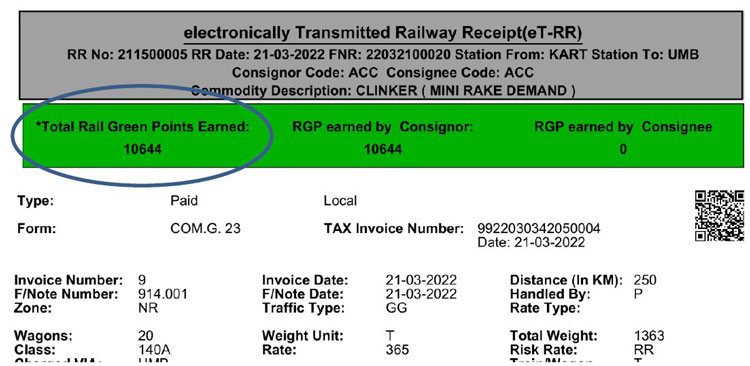

Figure 1: Rail Green Points (RGPs) indicated on an electronic Railway Receipt (RR).
Rail Green Point (RGP) account
An RGP account of the registered freight customer with Indian Railways is maintained as RGPs for transportation of goods and are credited on a real-time basis when an RR is generated. The customer will also get an email informing them about the RGPs that they have earned. The RGP account is also displayed in the dashboard of the customer available on the Indian Railways Freight Business Development Portal for all registered freight customers, as shown in Figure 2. Customers can also download digital Rail Green Points certificates on a monthly basis.
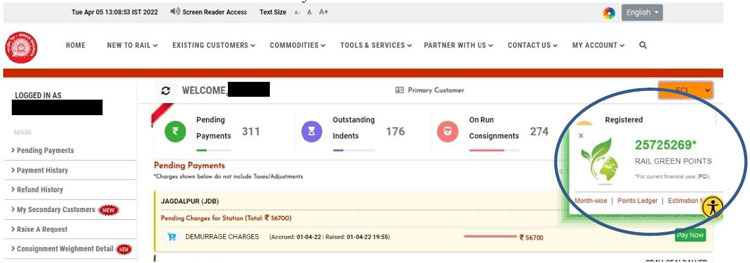

Figure 2: A view of the RGP Account of a customer, available via their dashboard.
Methodology for estimation of RGPs
The Logistics Division of India’s Department for Promotion of Industry and Internal Trade has developed a calculator for estimating greenhouse gas (GHG) emissions in CO2 tonnes for road and rail based on tonne-km through the Deutsche Gesellschaft für Internationale Zusammenarbeit (GIZ) GmbH and The Energy and Resources Institute (TERI).
Table 1 shows the emission factors considered in the GHG calculator which are used to estimate carbon emission savings when transporting by rail instead of road.


Table 1: The emission factors considered in the GHG calculator.
Benefits of RGPs for freight customers
Indian Railways expects that this initiative will encourage freight customers to choose railway over road.
Freight customers will be more informed about the impact their choice of transportation mode has on climate change. Corporate customers may like to mention how many RGPs they have earned in their Annual Sustainability Report. However, under the present scheme, RGPs do not entitle any customer for any tangible benefit from Indian Railways.
There is a smart freight calculator available on the Indian Railways website which customers can use to calculate freight charges (rates) for transporting cargo from one station to another. The freight calculator also provides vital information such as expected transit times, facilities and logistics service providers’ origin and destination terminals. With the introduction of RGPs, the smart freight calculator has been modified to show savings in GHG emissions on account of transportation of cargo by rail in place of road. A screenshot of the freight calculator is shown in Figure 3.
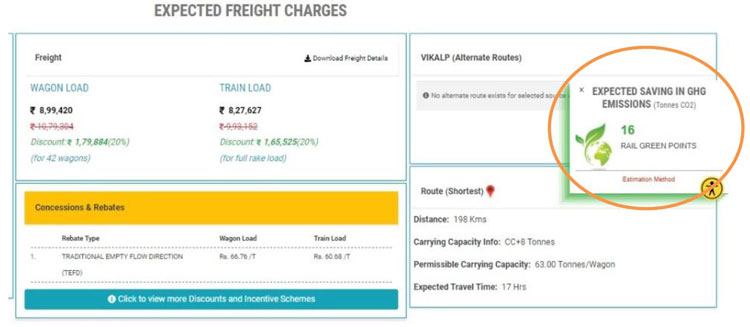

Figure 3: Expected savings in in the GHG emissions freight calculator.
Way forward
Every responsible corporate entity wishes to contribute towards combatting climate change by reducing carbon emissions, therefore it is important they are made aware of the emissions impact of their decisions. Indian Railways is perhaps the first railway system in the world which informs freight customers of their carbon savings when transporting cargo by rail on a real-time basis. The scheme has been hailed as an innovative green initiative by freight customers, as well as the media. Indian Railways expects that this initiative will encourage freight customers to choose railway over road. Corporate customers may present their carbon savings in terms of RGPs in their annual balance sheet or sustainability reports; they may also compete to earn more RGPs to present themselves as more environmentally friendly organisations. This is an initiative that aims to bring awareness to freight customers about their contributions in combatting climate change.


Related topics
Big Data, Cargo, Freight & Heavy-Haul, Digitalisation, Sustainability/Decarbonisation, Technology & Software
Related organisations
Centre for Railway Information Systems (CRIS), Indian Railways








